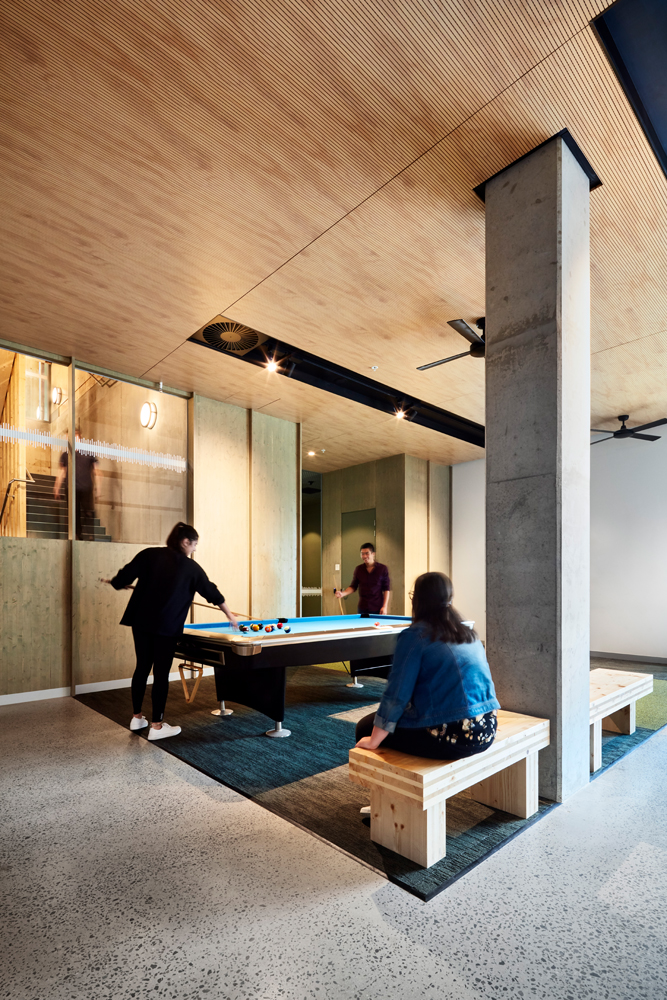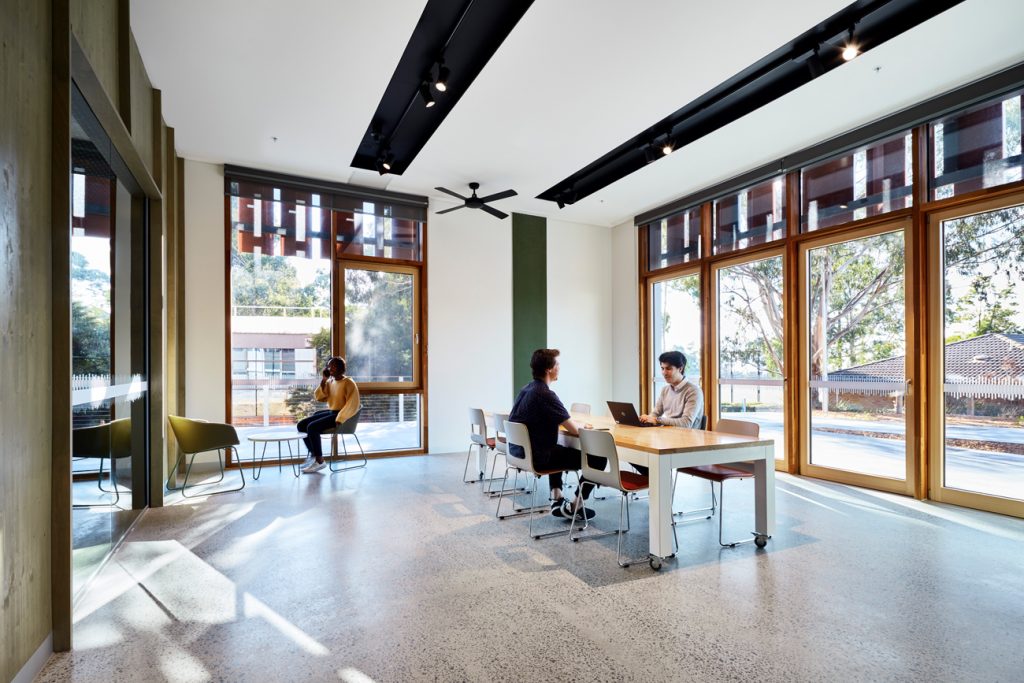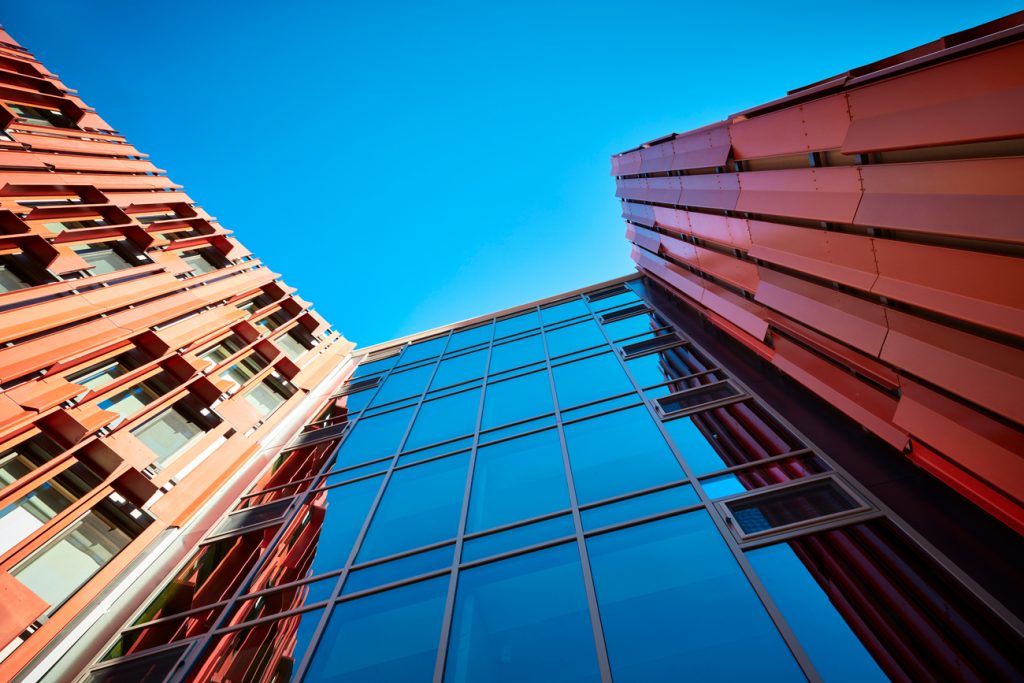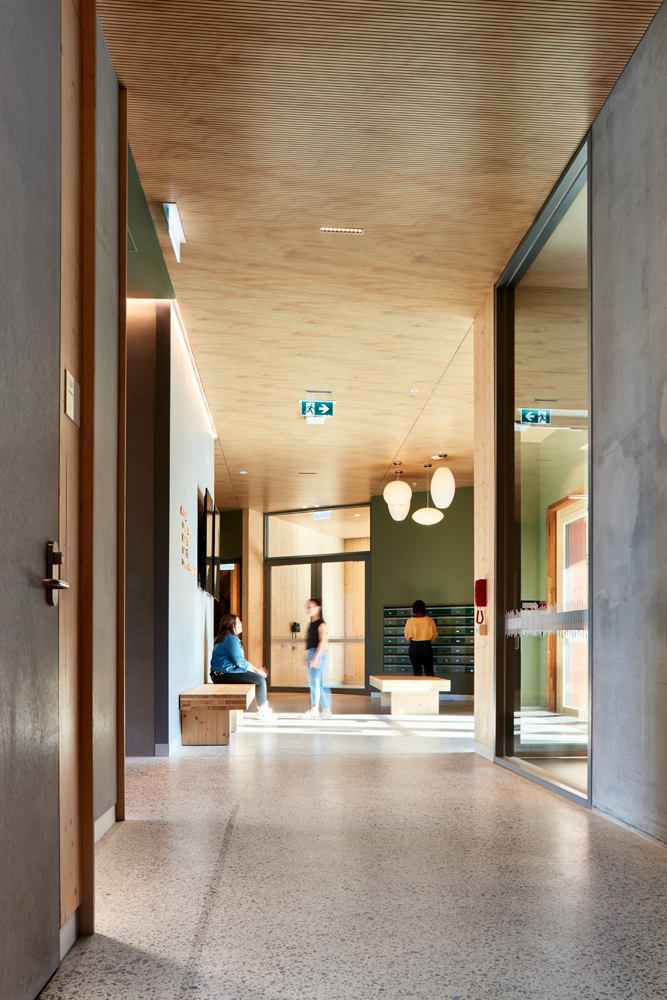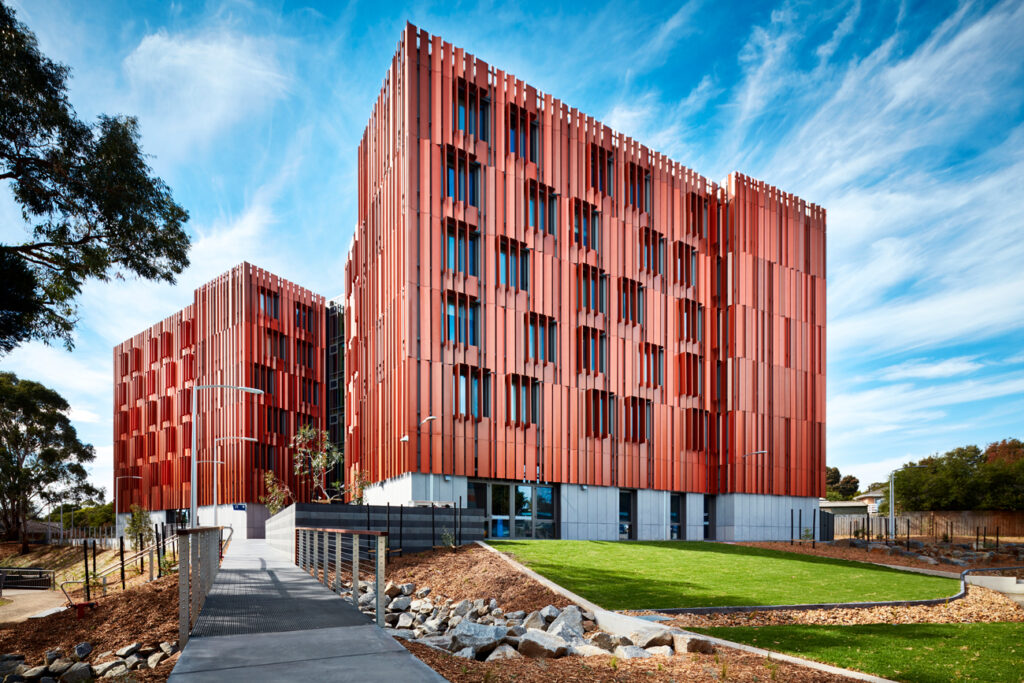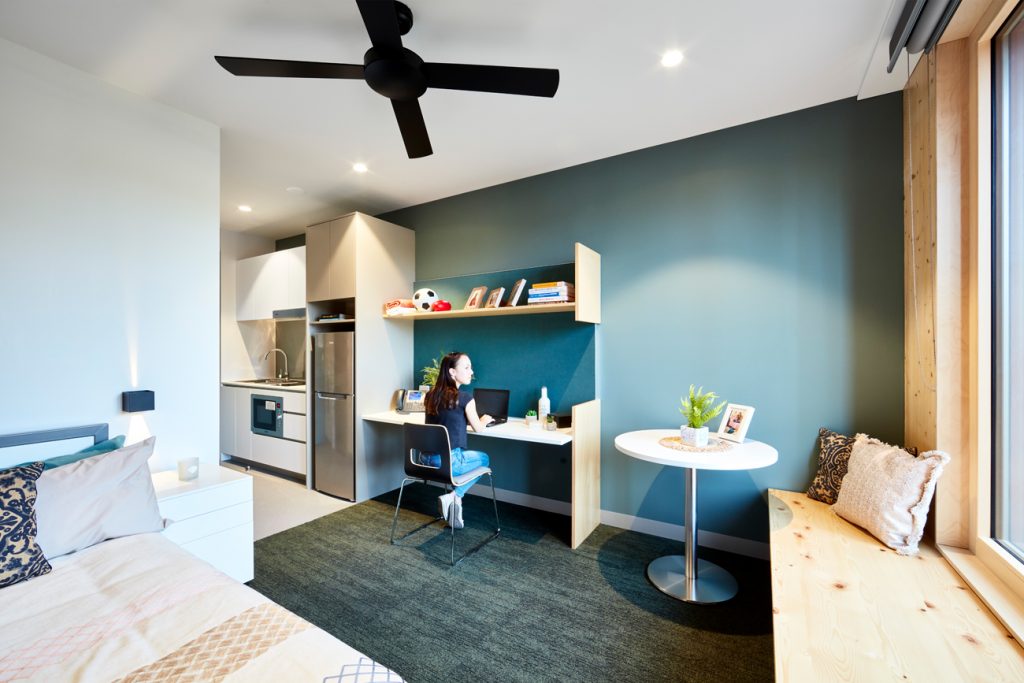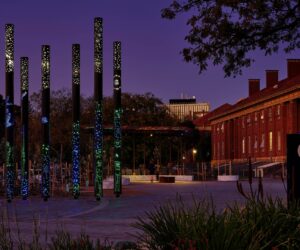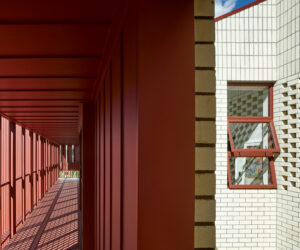Gillies Hall: a passive house benchmark
In the face of the climate crisis, the necessity for architects to create projects that positively impact the environment is undeniable. Monash University’s student accommodation complex in Frankston, Gillies Hall, sets its own benchmark in sustainability by being the largest passive house-certified building in the Southern Hemisphere and the first building of its kind to be built to passive house standards in Australia.
Designed by Jackson Clements Burrows (JCB), Gillies Hall comprises 150 single-occupancy apartments over six levels, plus two ground-floor apartments for residential support and ground-floor common spaces for all 250 on-campus residential students. It’s a cross-laminated timber (CLT) construction and one of the nation’s largest; CLT is used for wall, floor and roof structures above level two and the material is exposed throughout to enliven the interior.
Gillies Hall achieved passive house certification by including thermally-broken high performance window suites, insulation to the entire building envelope (including under slab), minimisation of thermal bridges to the entire building envelope, heat recovery ventilation systems, continuous shading screen to the façade and sealing the building envelope.
It follows that a project that sets its own benchmark in ESD would challenge the status quo in other ways, too. Notably, it was completed just 19 months from JCB’s appointment as lead consultant. What’s more, the conventional corridor-style of student accommodation has been rehashed in a friendlier vein: students’ apartments open onto “mini-lounges” that aim to turn encounters into gatherings. Each floor has an apartment designed for residents using wheelchairs.
In keeping with Monash University’s net zero carbon emissions strategy, Gillies Hall is 100 per cent powered by renewable energy courtesy of rooftop solar panels, a power purchase agreement with Murra Warra wind farm and an all-electric design. The building also features rainwater harvesting and site-sensitive landscaping in the form of a dry creek bed to manage water flow and support natural waterways.
As student accommodation, it goes without saying that learning goes on inside Gillies Hall – but it’s the ambitiously environmentally-minded approach to creating the building itself that has much to teach.
